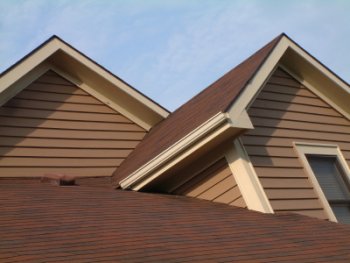Home Building Articles
Fiber-Cement Siding
July 08, 2009

Many times you can judge a book by its cover, at least when it comes to selecting
the type of siding for a home. If a siding looks expensive, it probably is. And
the same is true if it looks second rate. Is there a good-looking, durable siding
that isn't too expensive?
Fiber-cement siding has become a popular alternative to many other sidings. It requires
very little maintenance and has a very natural look. It can resemble stucco, wood
clapboards or cedar shingles, depending on how the panels are textured. Fiber cement
is also fire-resistant and durable, sometimes having 50-year guarantees.
Choosing fiber-cement siding for a home is the best practice for good-looking, quality,
cost-effective siding. With a few exceptions, installing fiber-cement siding is
just like installing wood siding. Here are some general points you should know about
its installation:
Prolong the life of the siding by coating the back side of it with a sealing primer,
which will prevent water from wicking on the back side and causing paint from peeling
on the front.
You can fasten the siding over wood framing using hand- or air-driven galvanized
nails or wood screws, or use self-tapping screws for installation over metal studs.
Fiber cement is compatible with most other types of material, so you can use any
type of natural wood or composite wood product for corner boards and trim.
Cutting fiber cement produces a fine dust with microscopic fibers in it, so you
have to wear goggles and a respirator. It is typically cut with a circular saw,
though specific fiber cement cutting tools can be bought and sometimes rented.
Because there are many different types of fiber cement, you should follow the manufacturer's
specific instructions carefully when cutting and nailing it, for your own safety
and to make sure that your warranty isn't voided.
Solid wood and vinyl are two of the most popular sidings used today. Wood siding
is expensive and high maintenance; it will have a relatively short life span if
it's not occasionally repainted and waterproofed. Wood siding also generates a fair
amount of jobsite waste during construction.
With vinyl siding, you get what you pay for. It's cheap, and it looks it. Fiber-cement
siding is reasonably priced, fire-resistant and withstands harsh weather.
*Source: HGTVPro.com